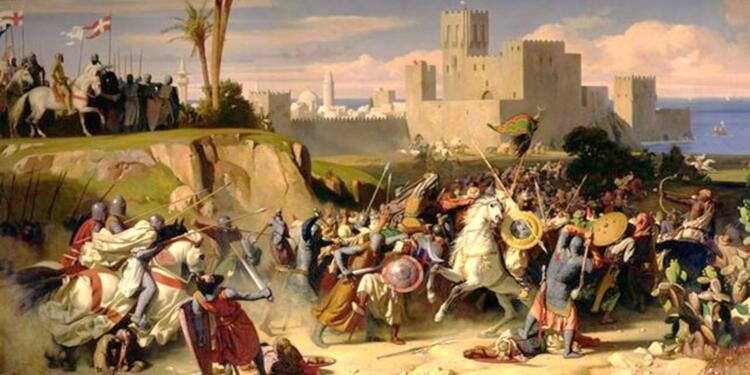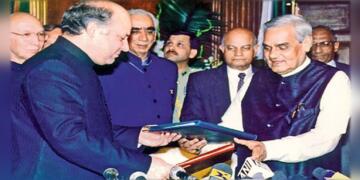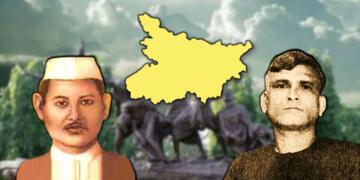In the last chapter of the series, we saw how the crusaders largely lost track due to unspecified goals. Fortunately, the next Crusade was not mired by this problem. The final aim of participants of the Third Crusade was getting back the Christian hold on Jerusalem, same as the first Crusade.
The build-up
Nearly 2 decades after the end of Second Crusade, the Muslim world saw the rise of a charismatic emperor named Saladin. He was the founder of the Ayyubid dynasty and was the greatest unifier, ruler as well as warrior of Muslim world in medieval times.
He was the one who solidified the Islamic confidence which they had regained after the Second Crusade. Saladin took control of Damascus in 1174 AD and Aleppo in 1183 AD. Within more than a decade, Saladin captured Jaffa, Acre, Sidon, Ascalon, Tiberias, Caesarea and Nazareth among others.
However, his most shocking victory came in 1187 AD. That year, Saladin defeated the Army of the Kingdom of Jerusalem. Other than Saladin’s military power, the loss of Jerusalem was owed mainly to the breaking of truce between the Kingdom of Jerusalem and Saladin.
Raynald of Châtillon, an ally of Guy of Lusignan, the king of Jerusalem, had raided a rich caravan travelling from Egypt to Syria. Saladin had demanded their release, but despite Guy’s request, Raynald refused. Saladin destroyed the army of Guy and Raynald in the Battle of Hattin. Later, Jerusalem fell from Christian hands in that very year. When the news of such devastation reached Pope Urban III, he collapsed and lost his life.
Pope’s announcement and its reception from Germans
Apart from a few Crusader states, only Tyre under the command of Conrad of Montferrat remained in Christian hands. The new Pope, Gregory VIII had to do something, otherwise history would not remember him kindly.
He did not take the diplomatic route and announced a new Crusade to take back Jerusalem and the Holy Cross. Explicit instructions such as repeat of the glory of First Crusades were passed to the Christian states. To provide religious authority to the Crusade, he interpreted capture of Jerusalem as Punishment of Christian sins in the bull Audita tremendi, released on 29 October 1187 AD.
The Pope’s message first reached to rulers of Crusader states and from there it was passed on to the rest of Europe. The Holy Roman Emperor, Frederick I Barbarossa was the first to take the Cross, the symbol of Crusaders during that time. He tried to take Philip of France on board as well but failed.
Even his personal meeting with Philip on Christmas of 1187 did not yield any result since Philip was at war with England. He feared losing his territory more than losing the holy site. Frederick decided to launch a mission of his own. His son Duke Frederick VI of Swabia, Duke Frederick of Bohemia, Duke Leopold V of Austria, Landgrave Louis III of Thuringia and various other nobles too accompanied him.
Frederick spent nearly a year planning for it. He did not want to repeat the mistakes of the other two crusades. He did not want the massacre of Jews. Frederick did not want any non-cooperation from the rulers en route his journey. What he wanted was cooperation from everyone even remotely and positively associated with the city of Jerusalem.
His delegations went to Archbishop Conrad of Mainz in Hungary, Godfrey of Wiesenbach in the Seljuk sultanate of Rûm, the Byzantine Empire and Prince Leo II of Armenia. Moreover, he also invoked his treaty of friendship with Saladin (signed in 1175AD).
He received largely favourable responses from almost all of them. Only Byzantines put the condition for his allies Godfrey of Würzburg, Frederick of Swabia and Leopold of Austria to take oath of behaving well in Byzantine territory.
Frederick obliged and sent Bishop Hermann of Münster, Count Rupert III of Nassau, the future Henry III of Dietz and the imperial chamberlain Markward von Neuenburg to prepare for his arrival in Byzantine.
Germans faced lots of backstabbing
Despite that, the Byzantine Emperor Isaac II did not trust the Crusaders that much. Even a well-managed journey through Hungary and expulsion of 500 men for indiscipline could not convince Isaac. On 25th August 1189 AD, more than 3 months after the beginning of Crusade, Isaac II referred to Frederick as “King of Germany” and not the leader of the Crusade Army.
The letter was a turning point between the relationship and the Crusaders went on a rampage. They looted and plundered the Byzantine empire. In November, Isaac ordered Kamytzes to cut the Crusaders to size. Local Armenians informed Frederick about it and he ensured that Byzantines were pushed as far back as Ohrid.
But this was not the end of backstabbing trouble for Frederick. Even in Turkish territory, he was ambushed by 10,000 Seljuk Turks. The Crusaders beat the Turks in two battles, namely the Battle of Philomelion and the Battle of Iconium (18 May 1190 AD). Just more than a year after the Crusade began, the Turkish territory was under Crusaders’ hold.
British and French joined in from sea route
While Frederick had led his infantry through land, there was another crusade coming from the sea route. While Frederick was busy preparing for his part in the Crusade, Henry II of England and Philip II of France had resolved their differences in January 1188 AD. They both imposed “Saladin tithe” on their citizens to collect finances for funding of war.
A year and half later, Henry II died and was succeeded by Richard. He proved to be a meticulous planner and a courageous warrior. Richard amassed 100 ships and 60,000 horses for the purpose. In April 1190, his fleet departed from Dartmouth.
He was set to meet Phillip II of France in July and provide further boost to the Crusade being led by Frederick. Unfortunately, the German king died while crossing the Saleph River on 10 June 1190. Disappointed, the Germans started to return and Fredreick’s son also showed unwillingness to continue with the mission.
The biggest achievement of the German contingent was that they were able to beat Seljuk Turks in their own backyard and killed more than 9,000 of them. Frederick of Swabia, son of Frederick was led to Acre.
Crusades’ victory of Acre
While Acre was officially under the control of Guy of Lusignan, the king of the remaining Kingdom of Jerusalem, Saladin wanted to recapture it. Understanding its strategic importance, remains of Frederick’s army, a German contingent led by Duke Leopold of Austria, a French force led by Henry of Champagne and the armies of Richard I and Philip II landed in Acre to protect it from Saladin’s onslaught.
It is here that Richard showed the Crusaders his shrewdness. He offered cash incentives to reinforcement fleets of Saladin army and ensured that the walls built by Saladin to fortify his capture were under his control. Not only that, Richard had also arranged reinforcements for the Crusaders by capturing Cyprus en route to Acre.
Coincidentally, Saladin’s Army also got divided over some trivial issues. Taking advantage of the situation, Richard landed in Acre on June 8, 1991. Within 34 days, Acre came under the Crusaders’ control. Richard also captured 70 ships and nearly 3000 Muslims loyal to Saladin.
Saladin wanted Richard to release these captives so he sent his brother Al-Adil for negotiations. The process was becoming tiresome for Richard and on 20 August, he ordered his men to decapitate 2,700 Muslim prisoners. Saladin’s Army was standing in front and tried to rescue them, but failed against Richard, the Lionheart.
Richard’s statesmanship
Around the same time, Richard had to face two big problems. He had to battle the intra-crusade conflict. The problem was that Richard supported Guy of Lusignan for becoming the eventual ruler of the Kingdom of Jerusalem. On the other hand, Philip and Leopold supported Conrad of Montferrat for kingship of Jerusalem.
A middle ground was found by declaring Conrad of Montferrat as successor after the death of Guy of Lusignan. But Phillip and Leopold did not wholeheartedly accept it and returned. Phillip did leave 7,000 French crusaders and money with Richard for the holy purpose.
The sum left by Phillip was not going to be enough. He had to sell Cyprus to the Knight Templars. However, Guy of Lusignan was declared king of Cyprus.
Siege of Jaffa
Jerusalem was now a port away. Jaffa was the port which supplied Jerusalem with the essentials. Capturing Jaffa would have meant stranglehold on the lifeline of Jerusalem. Richard decided to lead his contingent from the front.
Saladin tried to obstruct him by harassing his army through small-scale guerrilla warfare. But it was possibly the first time Saladin had to face an equally potent rival in the form of Richard. Frustrated, Saladin decided to take Richard head on by calling for on-field engagement on 7th September 1191 AD. The battleground was decided to be the Plain of Arsuf.
Richard’s strategy was to leave a very small portion of his Army vulnerable to infantry archers, as well as the infantry lance-bearer of Saladin. It paid off and after ensuring that Saladin’s Army was under a defined region, Richard’s army unleashed heavy cavalry in the evening. The decision by Knight Hospitallers to go berserk proved to be decisive and Richard, the Lioneheart’s legacy was further strengthened. Saladin’s formation had to rush to the forest to escape.
Richard fought tooth and knell
Getting hold of Jaffa choked the strategic logistical point for Saladin. But they had one more option in the form of Egypt. Richard wanted to attack it and totally isolate the logical base of Saladin. However, other Crusaders wanted to approach Jerusalem and Richard had to listen to popular demand. For this mission, the Crusaders had to capture and fortify the castles for protecting their supply lines. Additionally, wet weather created another unforeseen problem.
The rest of 1191 was spent in deciding the eventual ruler of Jerusalem. Richard’s appeal to Conrad went unheard as he was looking for a defence pact with Saladin in order to not let Guy of Lusignan become the emperor. Nobles were called to vote in and Conrad was finally declared as the king of Jerusalem. However, he was stabbed to death in the streets of Tyre.
Meanwhile, Richard kept fortifying Ascalon (earlier held by Saladin) and side-by-side, also kept sending diplomatic missions to him. He was also able to capture the strategically important fortified town of Darum on the frontiers of Egypt on 22nd May 1192 AD. They launched one more offensive on Jerusalem, but had to return due to dissent among their leaders.
Recapture of Jaffa and Treaty of Jaffa
Taking advantage of their indecisiveness, Saladin attacked Crusaders’ held Jaffa in July 1192 AD and recaptured it. By that time, Richard had planned to return back to England. However, he did not wish to go without valour.
Along with 2,000 men, Richard launched a naval attack on Jaffa. Saladin’s Army did not foresee it and lost Jaffa once again. Saladin did come back with better numerical strength, only to lose his 700 men to the bowmen of the Crusaders.
It is here that Richard had to think on pragmatic lines. He had two options. First one was to launch a full-fledged offensive on Saladin. It was an easy victory as Muslims were already demoralised by Richard’s Army.
However, Richard knew that it was next to impossible to retain the hold for a long time. Muslims could regroup and return within a short span of time. The second option was to leave Jerusalem in command of Saladin and he would allow Christian pilgrimages to visit Jerusalem and offer their prayers.
Richard chose the second option. He signed the Treaty of Jaffa with Saladin. Saladin agreed to provide access to Jerusalem to unarmed Christians for the next 3 years. Along with it, Ascalon was also returned to Saladin.
Support TFI:
Support us to strengthen the ‘Right’ ideology of cultural nationalism by purchasing the best quality garments from TFI-STORE.COM
































